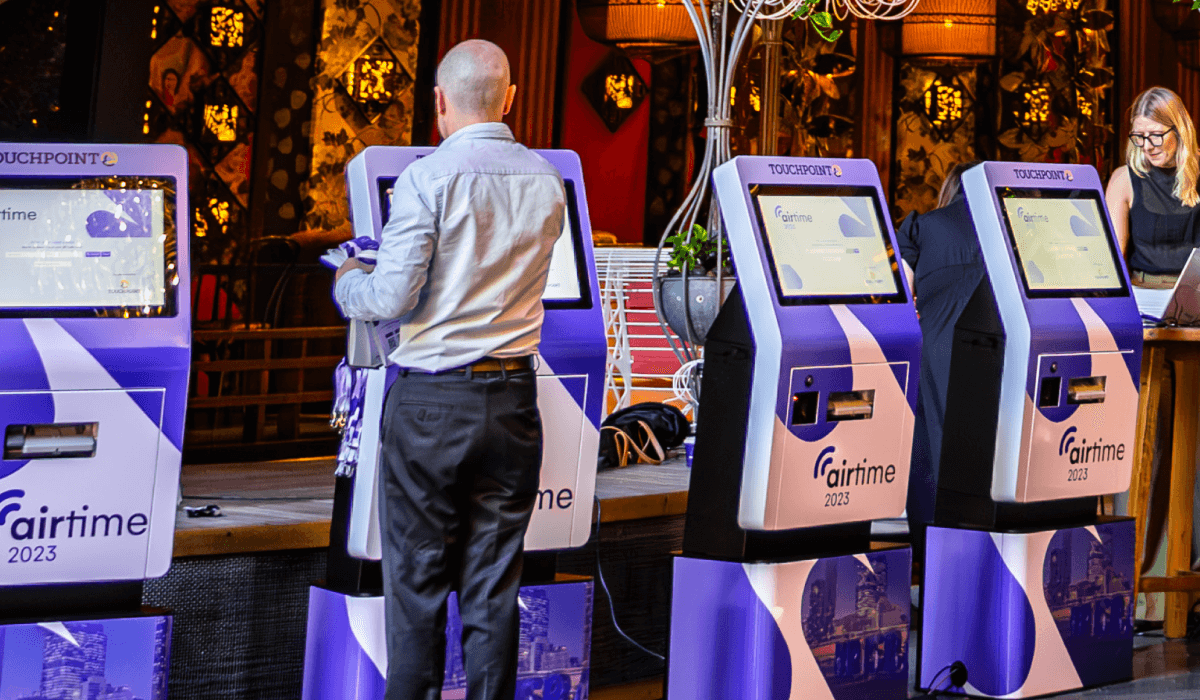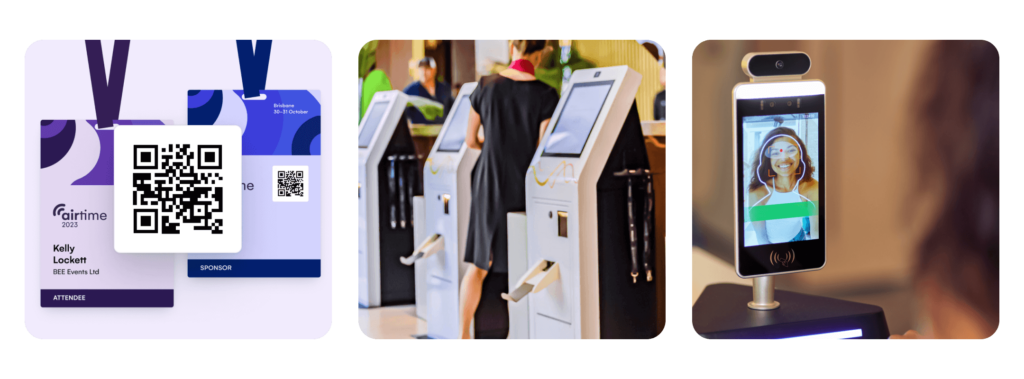
Check-in is often the first onsite experience attendees have at an event. If it runs smoothly, it sets the tone for a great event experience. If it’s chaotic or disorganized… well, you may end up with fewer attendees the next time.
In this EventsAir guide, we explore practical tips you can implement to optimize event check-in. With the right approach (and tools), you can create a seamless and efficient check-in process that truly impresses your attendees.
Why is event check-in essential to get right?
An event check-in refers to the process of registering attendees upon arrival – either virtually or in-person. It’s a simple process (in theory), but a surprising amount is riding on it. A smooth check-in process can set the tone for a positive event experience, while a chaotic one can leave attendees feeling frustrated and disorganized.
But a smooth check-in process doesn’t just benefit attendees – it also helps you track attendance, manage crowd control, and gather valuable data for future events. With the right event management platforms and check-in technologies, you can transform check-in into a seamless and efficient process.
6 Tips to optimize your event check-in process
1. Make pre-event registration simple
Great check-in processes begin long before attendees start arriving.
You need an intuitive, user-friendly registration system that collects all the necessary information from your attendees beforehand. If there’s friction, attendees will be more likely to abandon the process, leading to wait times and frustrated guests.
What does this look like in practice? We recommend creating the following:
- Event website: A well-designed, informative website that serves as the central hub for all event info (including registration). EventsAir’s drag-and-drop builder makes creating and populating these sites with on-brand content easy.
- Registration flows: These registration workflows guide attendees through the self-service process of providing information. EventsAir’s customizable registration workflows allow you to create tailored paths for different attendee types – VIPs, general admission, presenters, sponsors… you name it.
- Portals (attendee, presenter, etc.): These are personalized online spaces where different attendee types can access relevant information, update their details, and manage their event experience pre-, during, and post-event.

2. Implement self-service kiosks
Staffed check-in kiosks can offer a nice, personal touch at events with low attendee volumes. But they do tend to slow down the process. Self-service kiosks can be a lifesaver when dealing with unstaggered arrivals, plenary sessions, and high-volume events.
First, you need to figure out what kind of self-service kiosks you want. Your event management setup often partially determines this. For example, with EventsAir, you have access to two self-service options:
- Self-Check-In Kiosks: Streamlined stations where attendees can quickly check themselves in, print badges, and access event information without staff assistance. Our system is integrated with your event data to ensure a smooth, accurate check-in experience.
- Automated Beacon Kiosks: Cutting-edge check-in points that use Bluetooth, RFID, or NFC technology to automatically check in attendees – zero manual effort required. EventsAir’s beacon check-in tech helped organizers at the ASEAN-Australia Summit scan more than 38,000 badges automatically over the 5-day event.
Staffed check-in – whether at kiosks or via mobile app – has its place at modern events. That’s why we offer extensive staffed check-in features in EventsAir as well. But, by providing self-service options, you can save time and resources and make check-in more efficient in high-traffic areas.
3. Offer express check-in
Express check-in options are a powerful way to streamline check-in.
At the minimum, we recommend offering express check-in to attendees who pre-registered for the event online. They take less time to check in, and you want to incentivize attendees to pre-register to save time and resources on event day(s).
Consider creating a dedicated VIP check-in route, too. This will almost always be the most time-effective way for these attendees to check in, so it’s a nice incentive to include as a perk with higher-tier tickets. Small value-adds like these all contribute to purchase decisions.
4. Use event data to allocate resources dynamically
Event data is a valuable tool for optimizing check-in processes. It gives you visibility into attendee flows throughout your event and allows you to answer essential questions, such as:
- What presentations are most likely to develop queues?
- Where are check-in resources currently overwhelmed?
- Which areas have resources to spare?
With EventsAir, the reports and dashboards needed to answer these questions are right at your fingertips. The platform displays real-time access to check-in statistics, presentation attendance data, and attendee traffic patterns to help inform resource planning.
Track your event’s busiest areas, and allocate check-in resources to help manage the flow.
5. Train your staff
Your team is the human face of your check-in process. They’re also your last line of defense against bottlenecks and hiccups. Their training (or lack thereof) can make or break your event check-in experience.
Training should be comprehensive, covering:
- The process: Information to collect, event materials to distribute, etc.
- The tech: How to use event check-in tools, troubleshoot issues, etc.
- The event: Familiarity with the event schedule, layout, and critical information for attendees.
- The team: Roles and responsibilities, communication protocols, etc.
6. Think about traffic management
Finally, think carefully about traffic management around high-volume check-in areas.
At a basic level, this involves using ropes, barriers, and signage to guide attendees in an orderly fashion. However, there are also more nuanced issues to watch out for when planning traffic flow, including:
- Lines blocking access to other areas or creating bottlenecks
- Overcrowding in certain areas, leading to safety concerns
- Difficulties for attendees with disabilities or limited mobility
- Potential confusion among attendees, resulting in delays and frustration
Event check-in should be seamless
Optimizing your event check-in process is crucial for creating a positive attendee experience, reducing wait times, and ensuring accurate data collection. You can make your event check-in process seamless and efficient by leveraging technology, training staff, and implementing best practices.
EventsAir offers a comprehensive suite of tools to optimize every aspect of event management, including check-ins. From customizable registration workflows to real-time data analytics, we provide the solutions you need to ensure a successful event.
Ready to take your event check-ins to the next level? Contact sales today to request a demo or find a plan that best suits your needs.
Check-in | Event Planning & Management
See EventsAir in action
Discover why 12,000+ event professionals trust EventsAir to deliver effortless events, every time.




